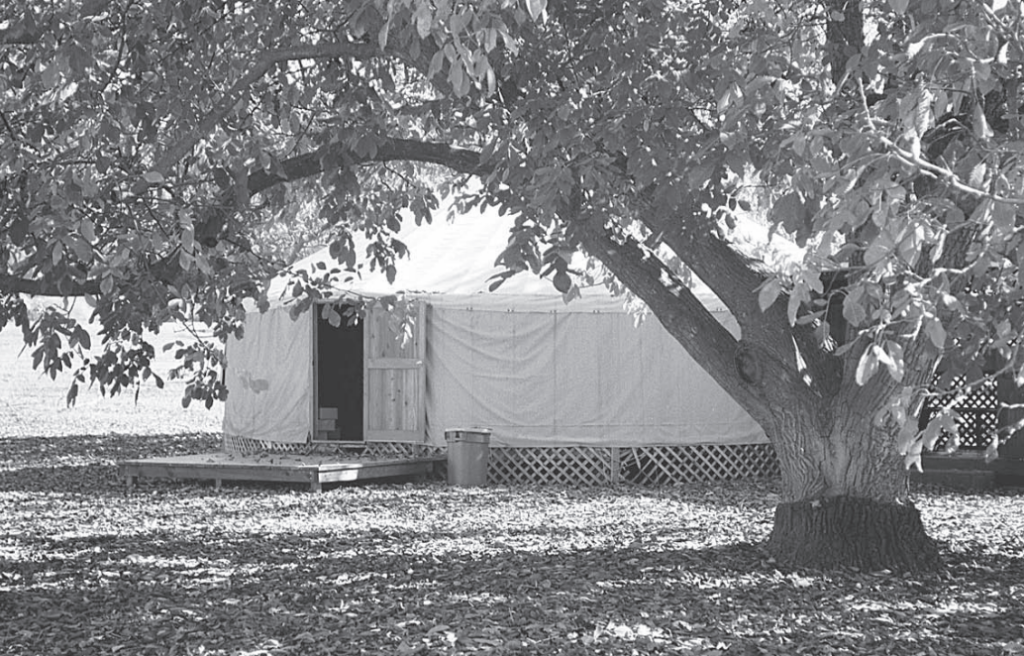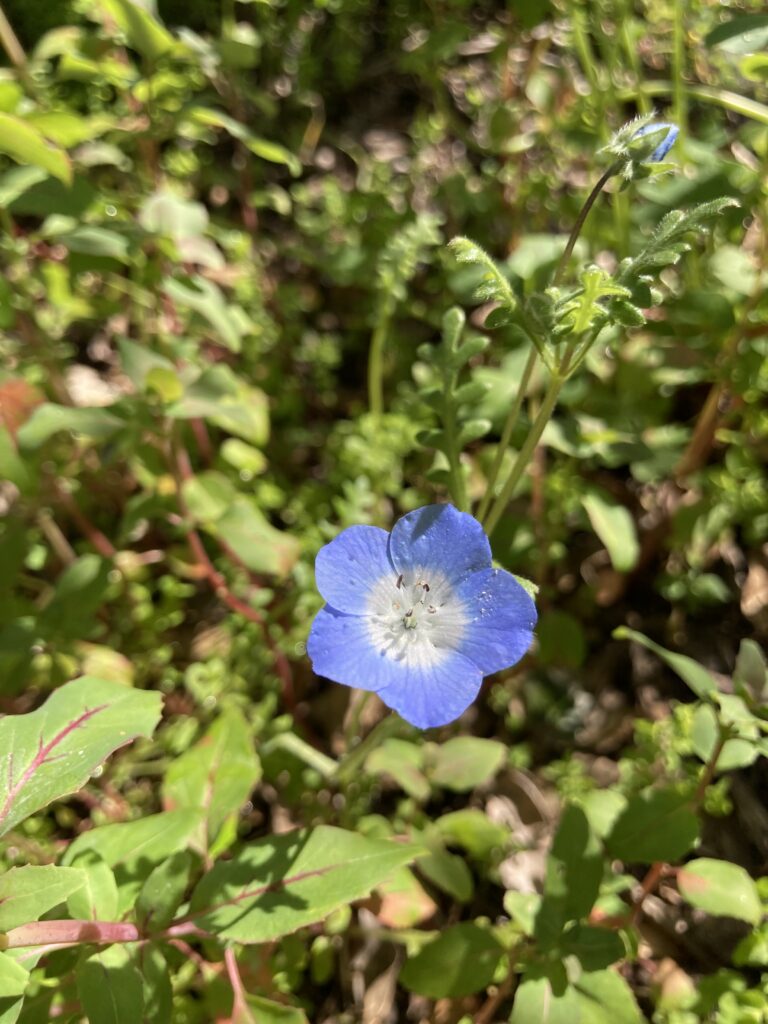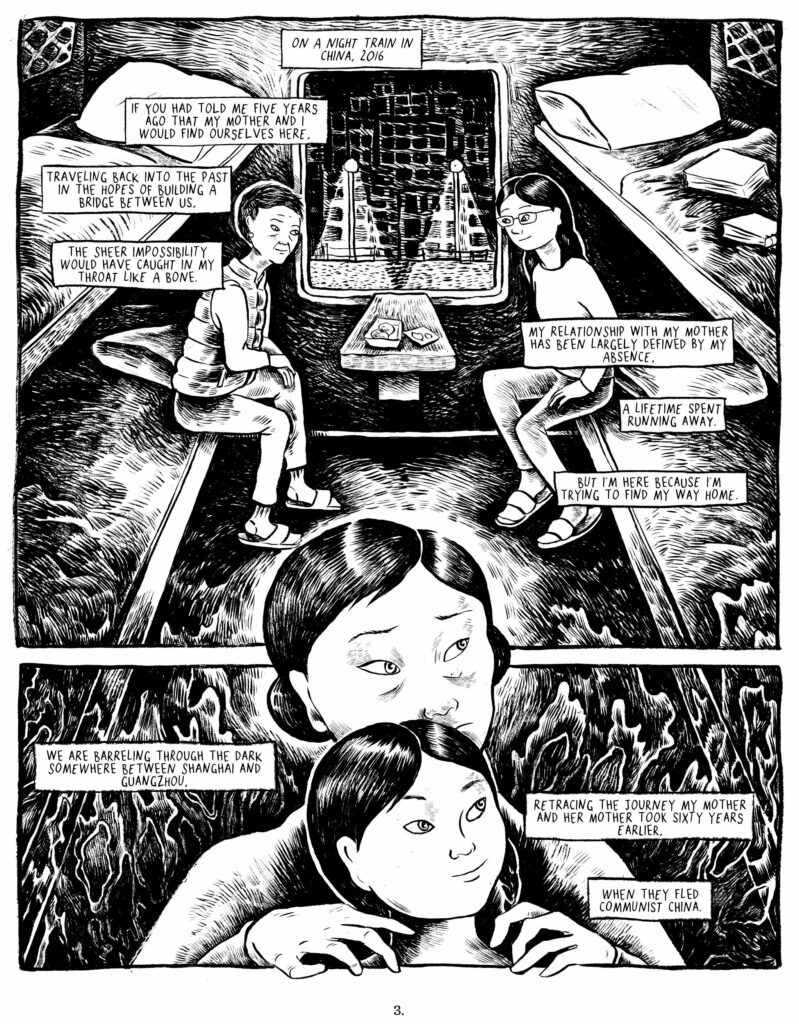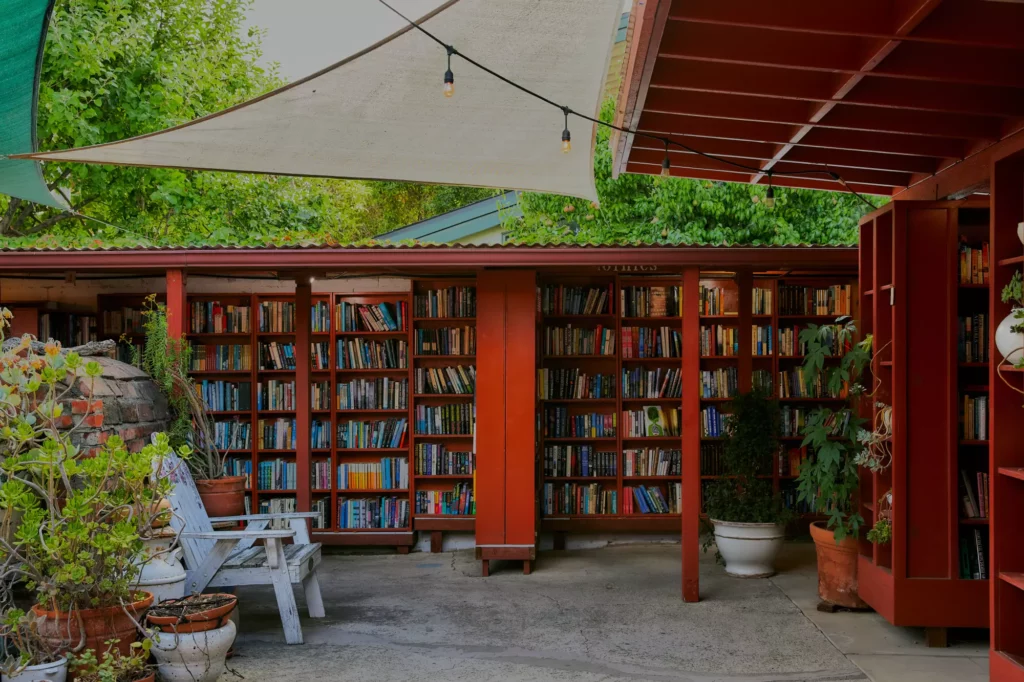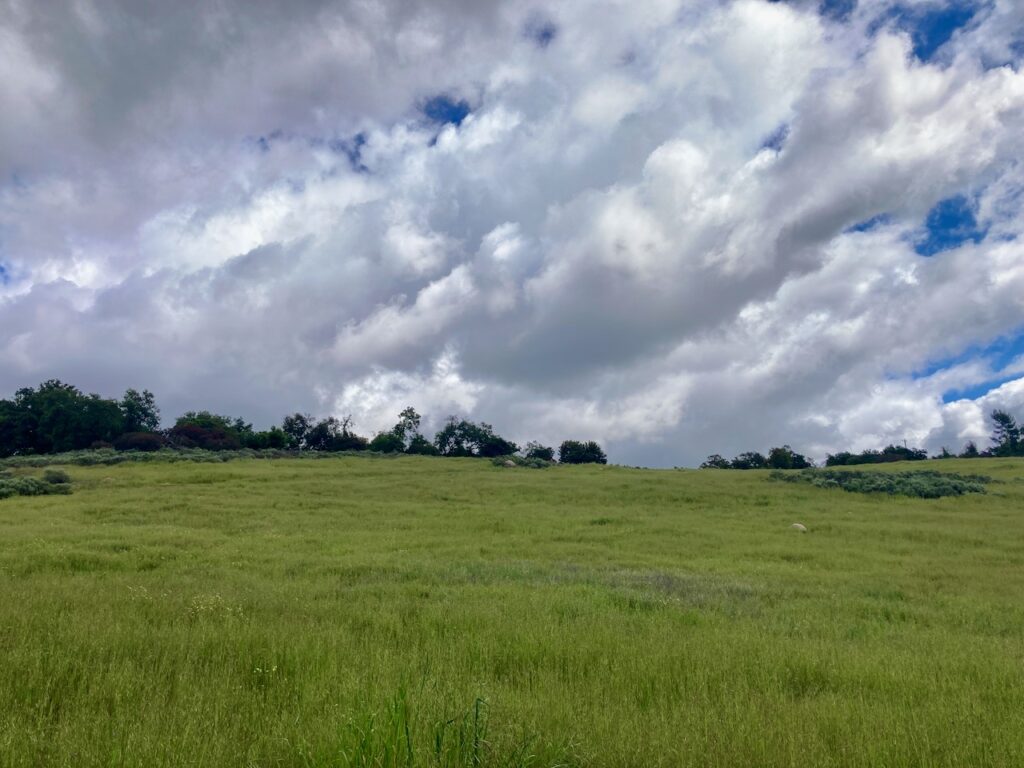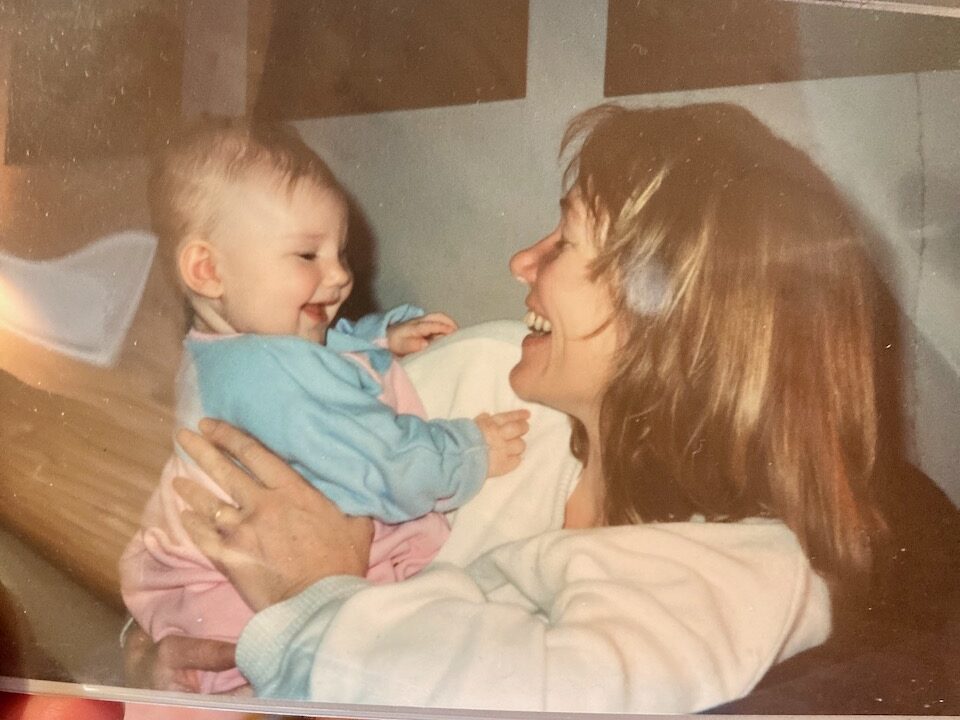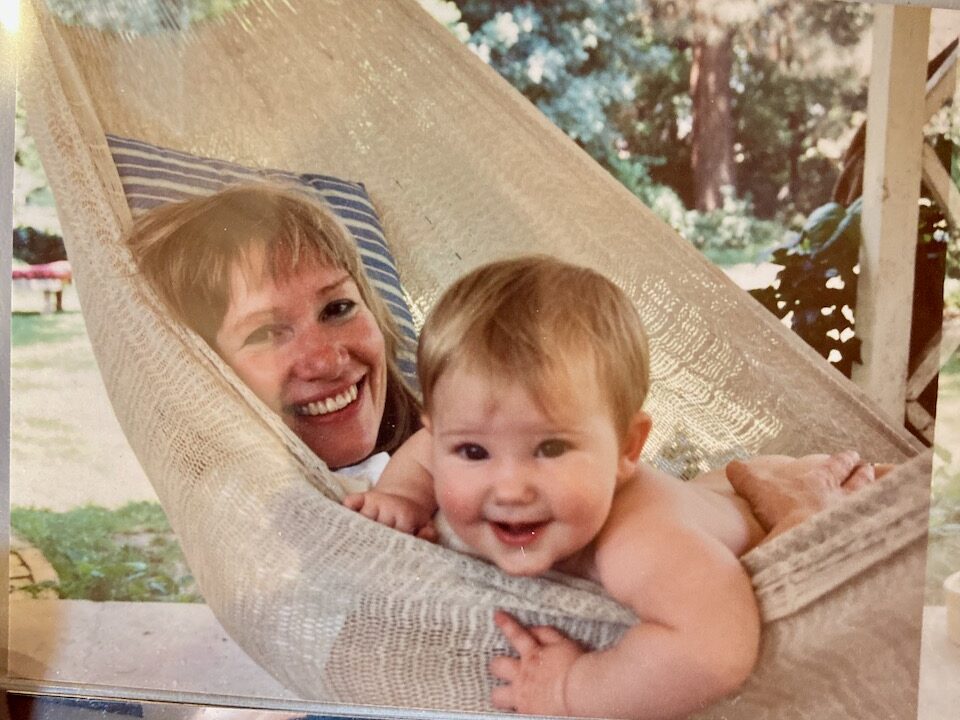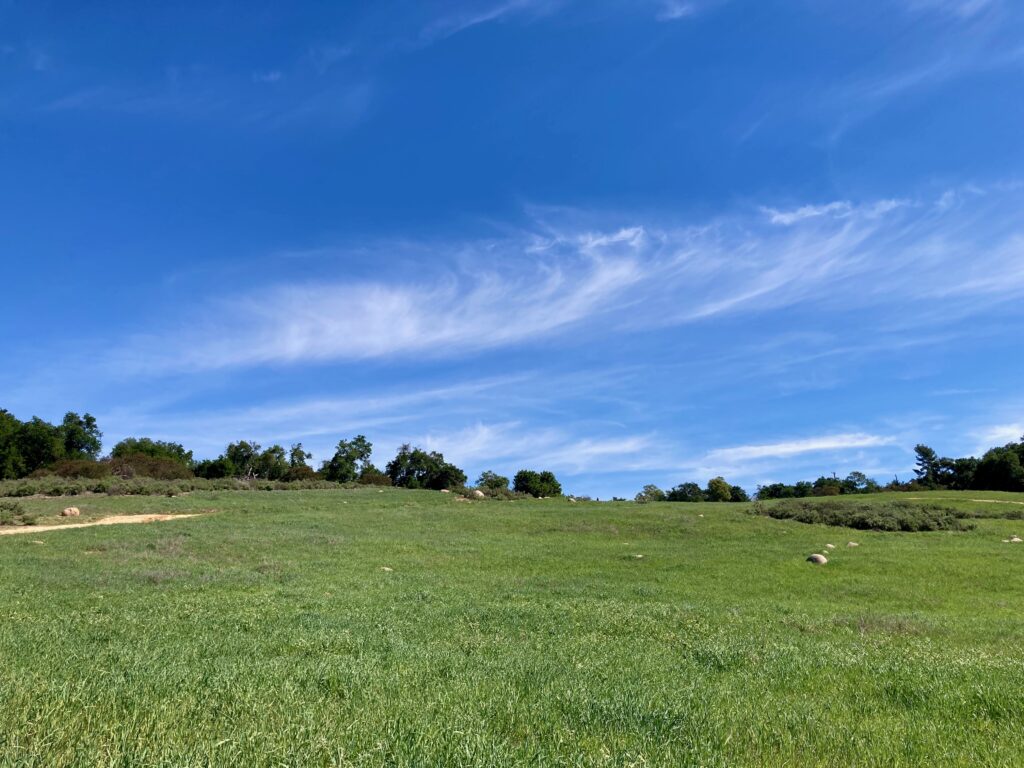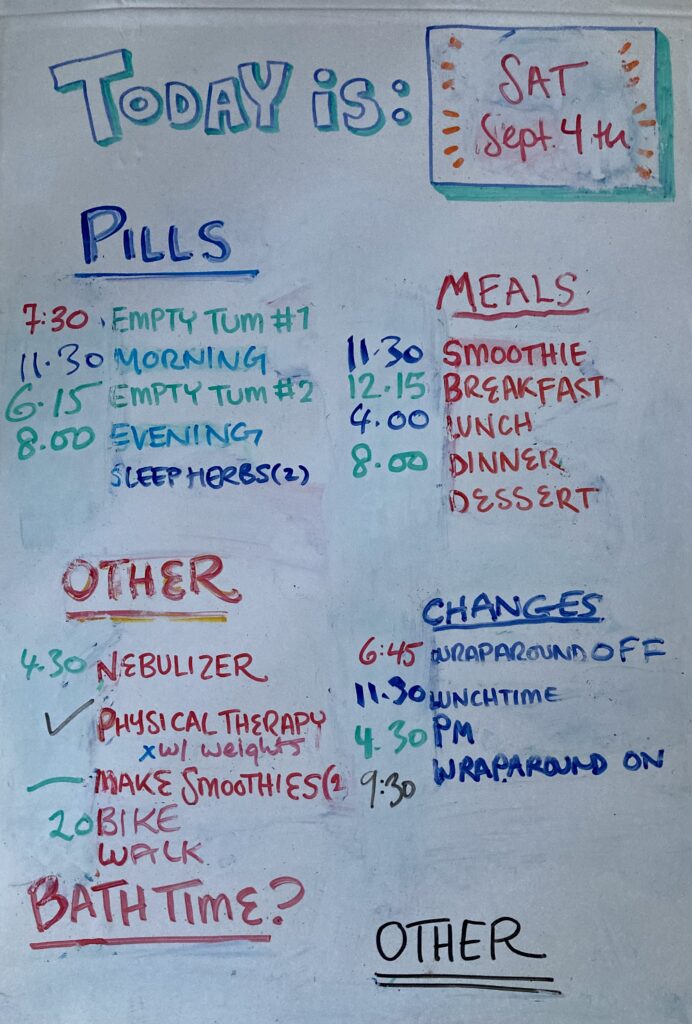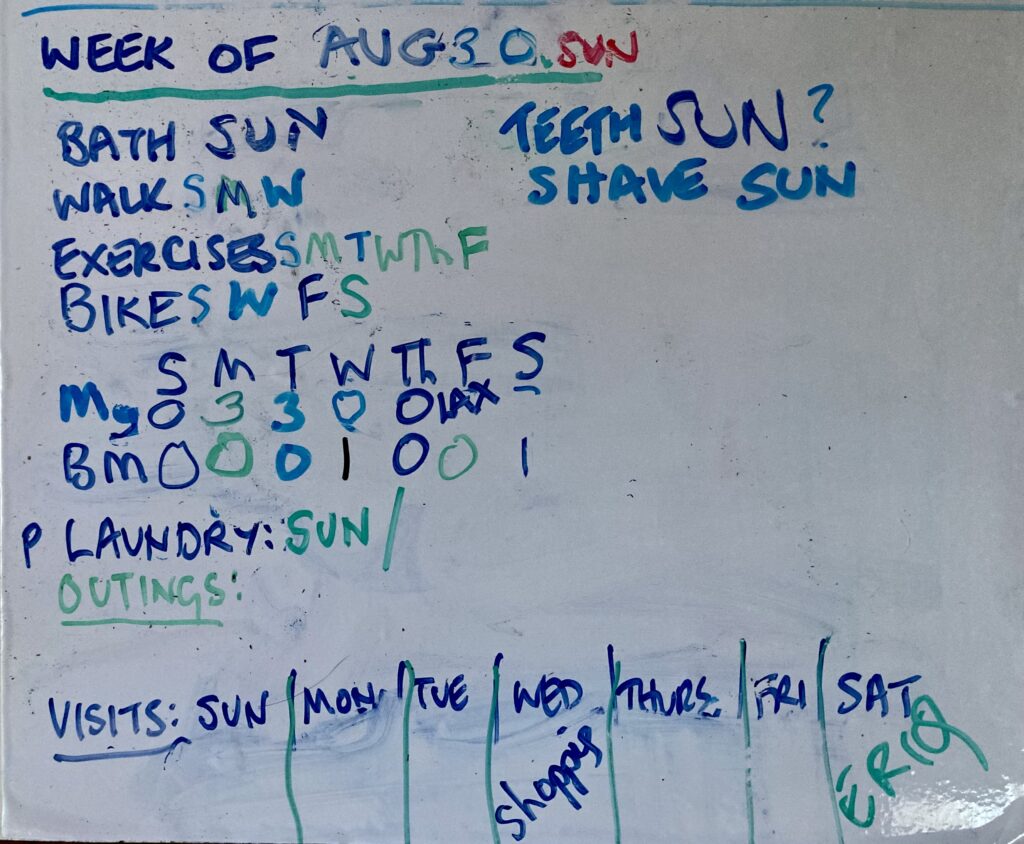Lemme tell you a story about an eagle.
Our town (~9,000 people) has a couple garages, but there’s a big one on the main drag. My family has been going there for decades. I drive past it every day.
There used to be a huge pine tree on the corner of their lot, but last year it became a hazard and had to be taken down.
Shortly thereafter I drive by and see they’ve hired a guy to chainsaw sculpt the stump into a bald eagle.
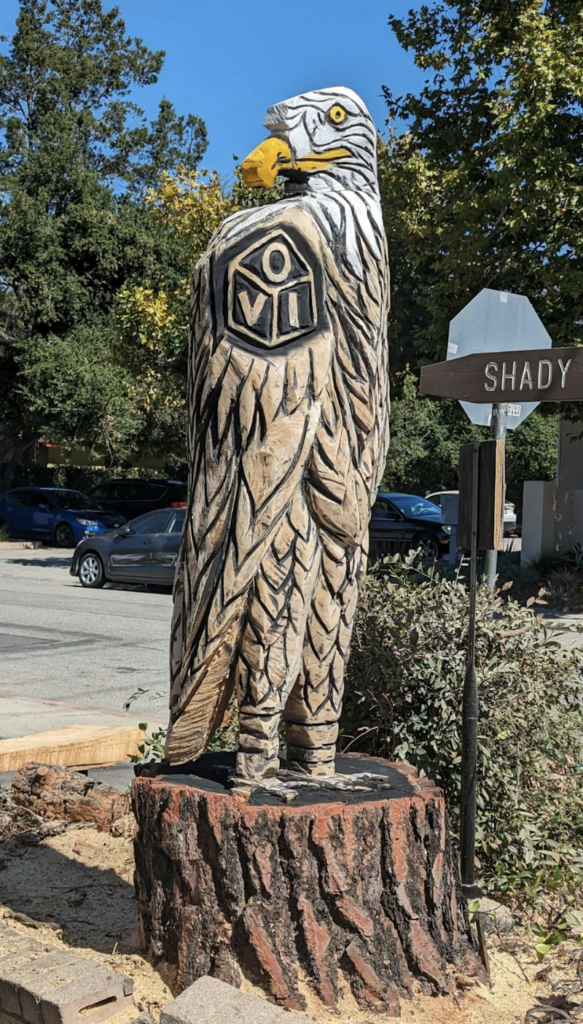
Birds own my heart, but nationalism makes me twitchy. I withhold outright condemnation of the eagle, but I’m skeptical. (The original owner—an objectively Good Dude—sold the business to a younger couple a few years ago, and I don’t have any knowledge of their whole deal.)
Then it turns out someone on staff is really into making costumes for the eagle. Every holiday. Every month. Stuffed turkey, witch costume, menorah headpiece, bunny ears. These people love to dress their bird.
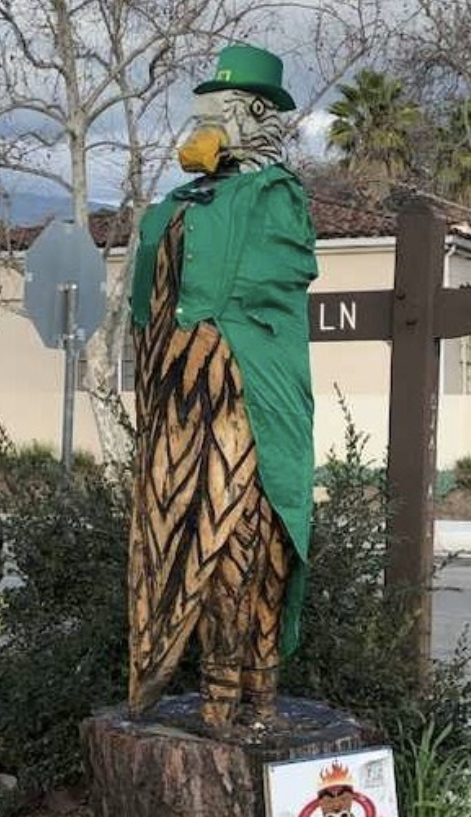
The changing of the eagle suit becomes a source of joy every time I drive through town.
Until June, when the eagle is bare.
Now look, maybe I’m expecting too much asking my garage to celebrate Pride. But this is a small town. Every time I drive by that stupid eagle—this thing that has previously brought me so much joy—I feel hurt. I feel reminded that there are plenty of people in my liberal bubble who don’t consider my community worthy of celebration. I drive to work, I feel bad. I drive home, I feel bad. The eagle is mocking me.
Then my A/C quits working.
So I book an appointment to bring my car in—and realize what I have to do.
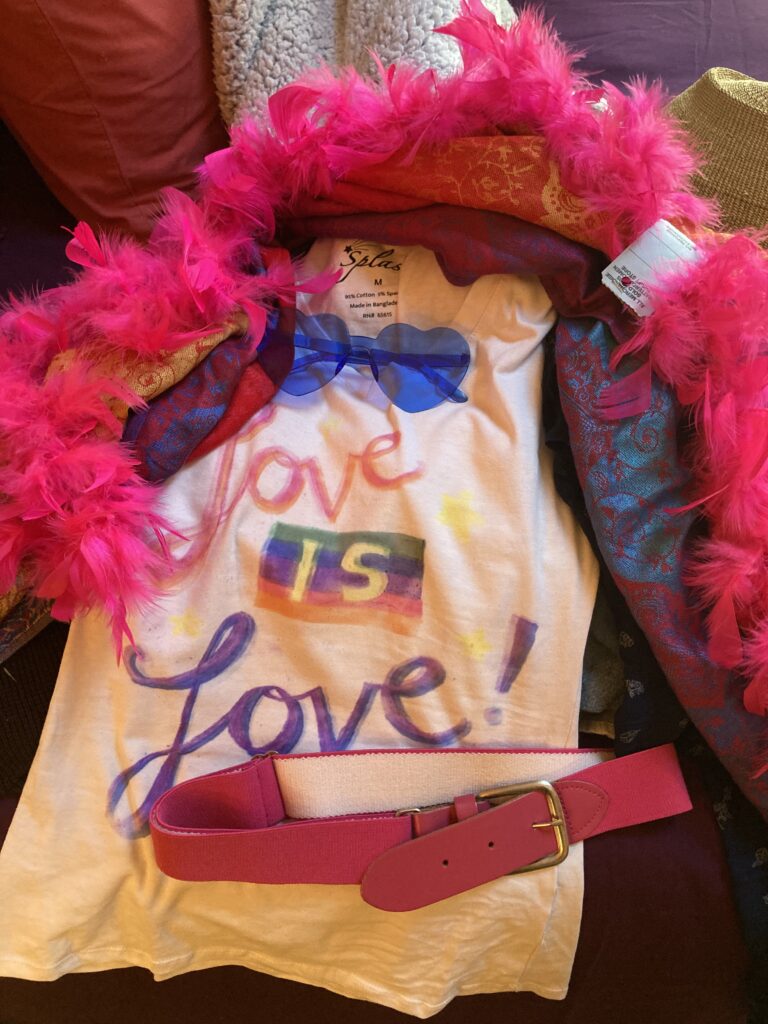
I pick all this up at a thrift store for under ten bucks. I print the shirt with some weird heat-transfer fabric crayons I find in a cupboard. I loop gold elastic around the sunglasses and pray they’ll fit on the eagle’s head. (It is also important to draw your attention to the price of the feather boa.)
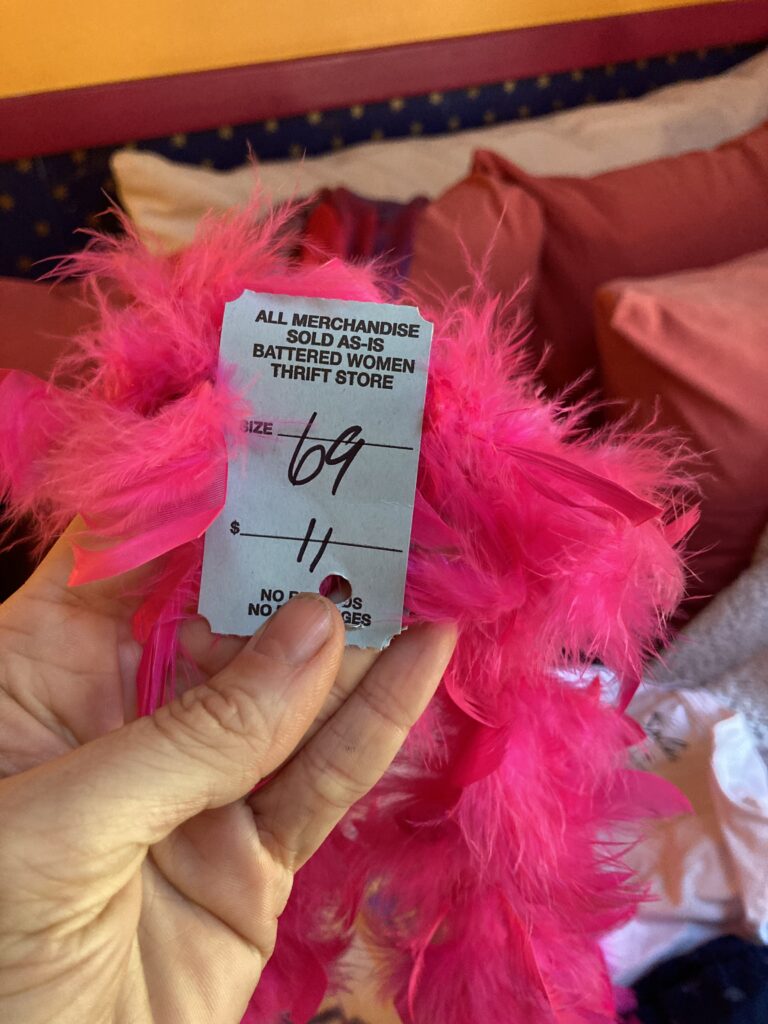
Nice.
My reasoning is thus: if I show up with a complete costume ready to go, someone will have to look me in the eye and say “We don’t believe in that,” at which point I’ll be finding a new garage. But if they let me dress the eagle, then people in town get to have the joy I’ve been missing since the start of the month.
I listen to a lot of hype-up jams on my way over. I hate confrontation. I also don’t wanna have to find another garage. I want to believe that this decision isn’t actively antagonistic, but I’m not particularly hopeful.
I talk through the A/C issue with the guy at the desk, hand over my keys, then take a deep breath.
“Who’s in charge of the eagle?”
“Oh, that’s all Dylan. Second bay from the end.”
I walk down the row of hydraulic lifts and find a disarmingly smiley middle-aged man pouring fluid through a funnel. I introduce myself and explain that, since the Pride parade is this Sunday and the eagle seems to be missing a costume, I have taken the liberty of making one myself, and can I get his blessing to go put it on?
Dylan grins this absolutely giant grin and goes:
“Oh hell yeah.“
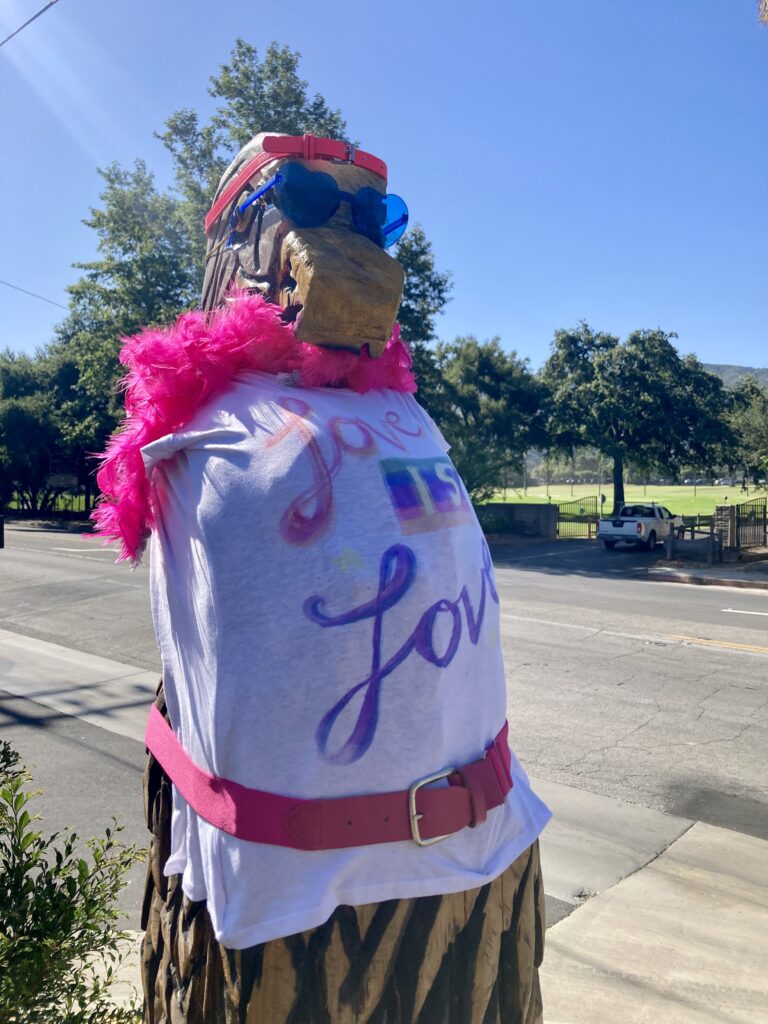
So that’s what’s up now.
Happy Pride.
